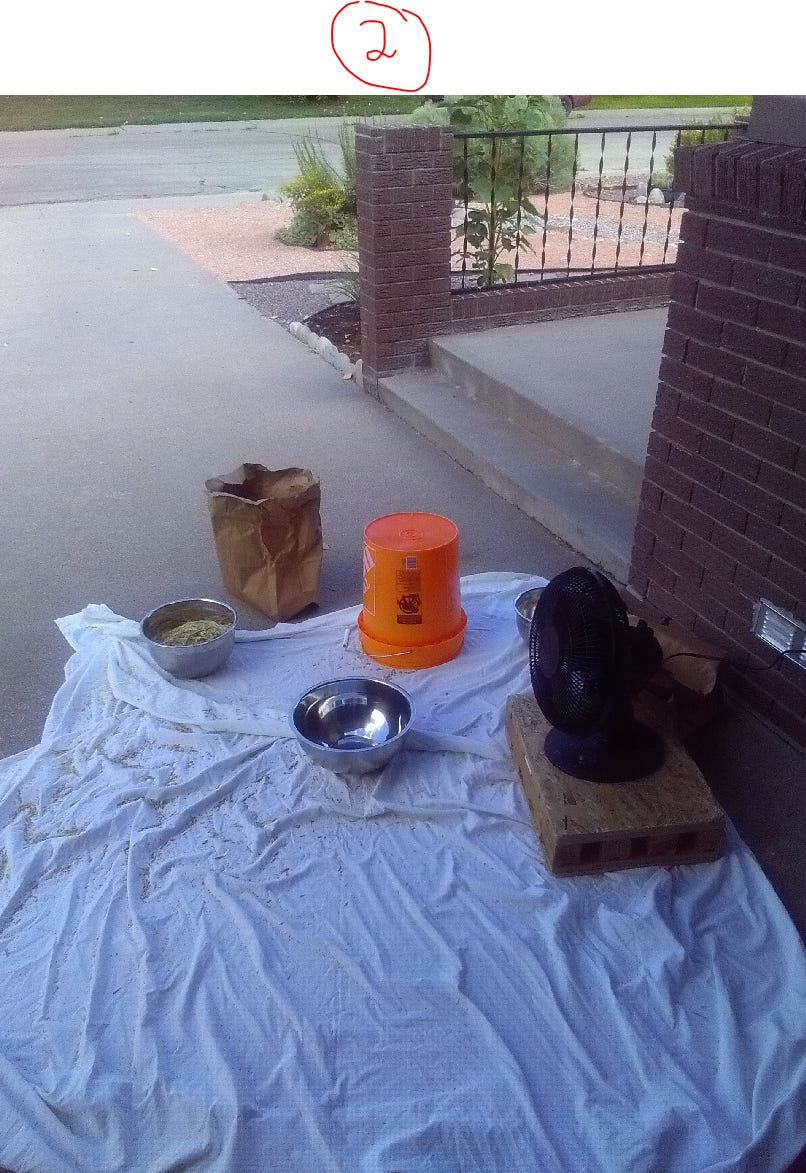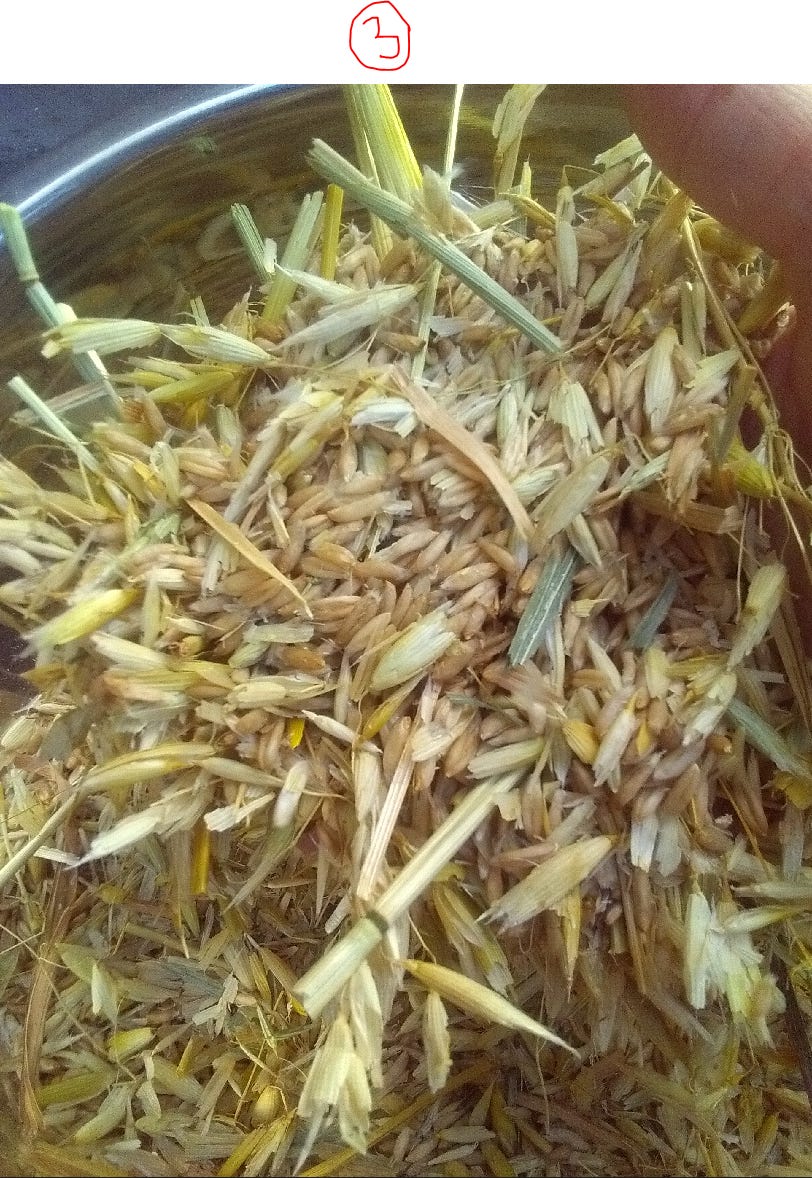No source of money is safe if a politician is nearby (esp a savvy one like Polis). Saving water should be an effort undertaken by city and rural alike. Lastly, because it's Friday: from bed to bowl!
In nature if you can find find a source of concentrated energy you'll find a creature exploiting it. In government if you can find a source of concentrated money, you'll find a politician exploiting it.
The money won't sit. It sure as hell won't come back to you. Some official somewhere will find a way to use it. We could argue whether what they do with it is a good idea, but it will get gobbled up for something.
Remember back when voters approved Proposition 123? The Affordable Housing measure from Nov 2022? Gave us all a good feeling because we were trading away money that could've come back to us to give to the government without TABOR limits in perpetuity.
I put a link to the blue book description below in case you don't recall. I excerpted a part I want to talk about (p 2 in the link) and attached it as screenshot 1. Look at the first and last bullet points.
Now look at the second link below. The folks that support Prop 123 are concerned because not enough of the local governments are lining up for their grants and loans. We're taking all this tax money? Doesn't anyone want it?
Never fear. Should you worry that the money would languish. Should you worry that the government might (and this is the point where the monocle pops out of my eye!) return that money to you so you could spend it on affording your own housing ...
... in steps Jared Polis.
Likely by rationale of the second bullet point from the list of things Prop 123 can do, Polis' newly-minted executive order to help him make his point after the legislature shot him down will soak up some of that money like so much brown gravy into a crusty piece of bread.
The thing about governments is, whatever money you give them WILL get used.
Whether it needs to be used, whether it's going to do anything useful, unless you specifically designate what it's for**, politicians and bureaucrats will find a use and use all they can.
That's why I'm almost always against these initiatives that create some sort of "[fill in the blank] fund".
The last thing we need is money sloshing around just waiting for someone to manufacture a use for it. If it's not going to pay a bill or meet a need, it should be in our pockets.
See screenshot 2 from the second Sun article
**and even sometimes when you do specifically designate it, if you have a politician willing and lawyers clever enough, they'll try to find a way to justify it
https://leg.colorado.gov/sites/default/files/images/2021-2022_108vbb.pdf
https://coloradosun.com/2023/07/27/proposition-123-opt-in-process/
https://coloradosun.com/2023/08/21/jared-polis-affordable-housing-executive-order/
Related:
Besides making him look as though he’s doing something big, the Gov’s recent press release has the added benefit of distracting the media and pulling them away from more stories about the unmitigated cluster that his Universal Pre-K rollout has been.
He is a very savvy politician and quite adept at leading the press around by the nose. One just wishes that the press were a little more savvy themselves.
Saving water should be a team effort (not just a sacrifice by rural areas of the state). And saving it will cost money.
The article linked first below gives a rundown of a recent panel discussion among business leaders, non-profit leaders, and politicos about water in Colorado. The aim of the discussion was to give business leaders a variety of perspectives on water issues in the arid West.
If water and water scarcity are an interest, it's a worthwhile read.
One of the main themes in the talk was that business needs to start contributing to saving water in this state. As you might have guessed from the top line here, this is something I agree with.
The idea that solving water problems in this state means taking from rural areas and Ag so that the Front Range can keep on growing and using water is a non starter for me. Businesses will surely, therefore, need to be a part of the solution.
In following back on some of the links here and studying, I found some interesting examples that I thought you might want to see.
Amazon (and their computer arm Amazon Web Services) was present at the talk and so I went to look up what Amazon has done to conserve water. The second link below is from the company itself and thus represents as much PR as it does information, but it was interesting to note the different plans they have.
I'll leave it to you to read, but one of the tidbits was rerouting treated water from their evaporative cooling systems to be used in irrigation/farming.
The idea of reusing water to irrigate is not a new one, of course, and it put me in mind of what Aurora, CO is doing. The third, fourth, and fifth links below detail a couple of programs they have to either use treated, but non-drinkable, wastewater to irrigate landscaping around the city and another to use recovered and treated wastewater for potable water**.
One other thought that came to mind while reading this was an analogy. When I bought my house I needed a new washer/dryer and I bought one of the front loading ones. The front loading washers use less water than a tub style, but that less water doesn't come without a consequence.
No choice is is ever made without consequence.
The price you pay for less water use in a front loader is time. All other things being equal, a front loading washer will take more time to get clothes as clean as a tub style.
What then do we make of efforts like those of Amazon and Aurora, or of efforts that we might imagine other companies and cities making? They can indeed innovate and save water but at the cost of, well, money.
Amazon must have treatment plants and water quality monitors at its server farms and then must build and pump water from said server farms to farm-farms to irrigate.
The City of Aurora has to pump water from North of Brighton, CO all the way down to its reservoir near Centennial, CO in a pipeline, lifting it at 3 pump stations, and then treating it.
Neither of these are free.
Knowing that water saving must be paid for with dollars, we now arrive at yet another question: who pays?
I guess time will tell. My hope is that the answer to this question will be "let him who benefits pay the cost".
**if you choose to read up on the recovered wastewater, you may come across the term "use the water 'to extinction'". This means that Aurora has water rights that allow them to use the water over and over without having to let it go downstream. As I wrote in earlier posts, and as I'll talk about in later posts with regard to the San Luis Valley, any tributary water source can only be put to a beneficial use and then must be let go. Any NON tributary water source essentially introduces water into a system where it would not have been found naturally. It can thus be re-used without any worry of putting an equivalent amount into the system to make up for what you are not allowing to go downstream.
https://www.coloradopolitics.com/news/colorado-companies-explore-ways-address-water-woes-west/article_c088b7fc-364f-11ee-90c7-670a6374f125.html?utm_medium=social&utm_source=twitter&utm_campaign=user-share
https://www.aboutamazon.com/news/aws/aws-water-positive-by-2030
https://www.auroragov.org/cms/One.aspx?portalId=16242704&pageId=16599887
https://coloradosun.com/2023/01/19/prairie-waters-aurora-recycling-reuse-expansion/
https://www.auroragov.org/cms/One.aspx?portalId=16242704&pageId=16599840
From bed to bowl ...
Last post of the day (last one for a couple actually--be away from my computer tomorrow), and you know what that means: something for fun and not related to politics.
I think I mentioned that I tried growing oats as this year's grain. I thought I'd put a pin in that one now that everything's all done.
After harvesting the oats (see pic 1), I set about threshing them. Nothing fancy or high tech here, just taking the seed heads and slapping them back and forth inside a bucket. I did this work over a bedsheet like usual so I could gather up stray seeds.
Quick pro tip I learned in dealing with a grain that had stalks and small seed heads? Put all the harvested stalks pointing the same direction!
I'd like to think of myself as a reasonably smart man, but good Lord if piling the stalks higgledy-piggledy into the fitted sheet didn't waste tons of time re-orienting them before threshing.
In my defense, I suppose, things like quinoa and amaranth have multiple seeds on one big flowerhead so it's never been a case of pick-up-sticks in the past, but I still feel a bit of a doofus.
Threshing done, it was time to winnow. I set up the same station as I have in the past using a fan and a couple of bowls. That's picture 2. Picture 3 shows some partially refined grain from the threshing. It looks rough, but oats were actually a hell of a lot easier to winnow by hand than was quinoa or amaranth: the grains are bigger and heavier and thus the fan was better able to separate out the chaff (the bigger seed's higher inertia meant that they were much less responsive to the fan than would be a lighter grain and so their path as they fell was straighter than a grain whose mass is closer to the mass of the chaff).
Picture 4 shows the grain as refined as I got it. As I've mentioned in the past, this result comes from a "cascade" type system where the output of a refining trial becomes the input for a future one; that is, the refining happens by progressively collecting more and more pure grain.
And picture 5 is the result! A delicious bowl of steel cut (once they'd been run through the blender) oats. The texture is wonderful and quite a bit different from rolled oats. I like both, but this bowl was special given that I grew it, threshed it, and winnowed it.
I'm sold on oats being a grain that it's reasonable for a part-timer to grow. Get a variety that doesn't have a hull and, with a reasonable amount of space in the garden and time, and you can have ample grain to eat on over the winter. No special equipment required and less hassle than the smaller grains like quinoa or amaranth.
Being sold isn't just idle talk either. Picture 6 shows me out in the backyard sod-bustin' to put a strip of lawn into a grain bed. I turned the grass recently (sod makes a decent soil base--just put it green side down and give it a half a year to a full year to break down), covered it with an inch of compost and will plant some vetch in it later in fall to stabilize it and get the soil chemistry percolating.
I'm going to do one more year of oats and then maybe look at some wheat or rye which can be "steel cut" and put in hearty loaves of bread. I don't have a flour mill ... yet.
If you're thinking of trying a grain and don't have a lot of equipment, give oats some thought.
Have a good Friday and back at it Sunday.










